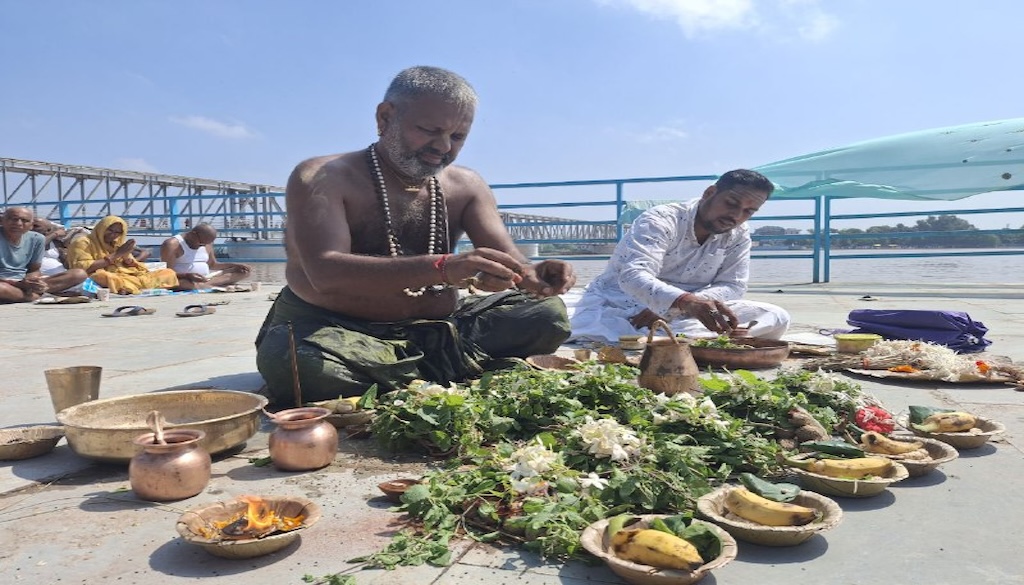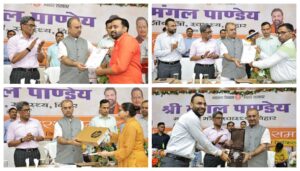Pitru Paksha: Devotees Perform Tripindi Shraddha in Bodh Gaya, Tarpan in Falgu River for Ancestral Peace

Gaya: On the fourth day of the Pitru Paksha Mela, pilgrims from across India and abroad gathered at Dharmaaranya in Bodhgaya, 18 km from Gaya, to perform Shradh rituals for their ancestors. The sacred site, believed to be where Dharmaraj Yudhishthira conducted Yagya and Pinddaan for his brothers killed in the Mahabharata war, has seen a significant influx of devotees.
Pilgrims performed the Tripindi Shradh at Dharmaaranya altar, a ritual meant to honour the souls of departed ancestors. On this occasion, Tarpan, a ceremonial offering of water, was also conducted in the Falgu River, seeking peace for the souls of the deceased.
From early morning, devotees assembled at various sacred spots, including Dharmaaranya, Matangvapi Sangam Sthal Saraswati altar, and the Mahabodhi Temple. They began their day with a purifying bath in the Saraswati River, followed by Tarpan with Panchratna—an offering of five precious items. This was carried out to seek salvation for their ancestors and teachers before engaging in the Tripindi Shradh.
After completing the Shradh rituals, devotees prayed for their ancestors, teachers, and loved ones at the Lord Vishnu Temple within the Dharmaaranya premises, seeking their ascension to heaven.
The ritual continued at the Matangi altar, where pilgrims performed Tarpan and Shradh in honour of Matang Rishi, subsequently offering Pind to Matangeshwar Mahadev. The pilgrims concluded their rituals by worshipping Bhagwati Matangi Devi, praying for their ancestors’ salvation.
Many pilgrims also performed Shradh at the Mahabodhi Temple, where they paid homage to their ancestors before seeking blessings from Lord Buddha. The temple and surrounding altars, including Dharmaaranya, Matangvapi, and Saraswati, saw long queues of devotees, with pilgrims navigating through multiple checkpoints to perform their rituals.
The influx of pilgrims has led to significant traffic disruptions in Bodhgaya, adding to the challenges faced during the holy observance. Despite the congestion, the spiritual fervour remains undiminished as devotees continue to perform these age-old rites, connecting deeply with their heritage and seeking peace for their forebears.





